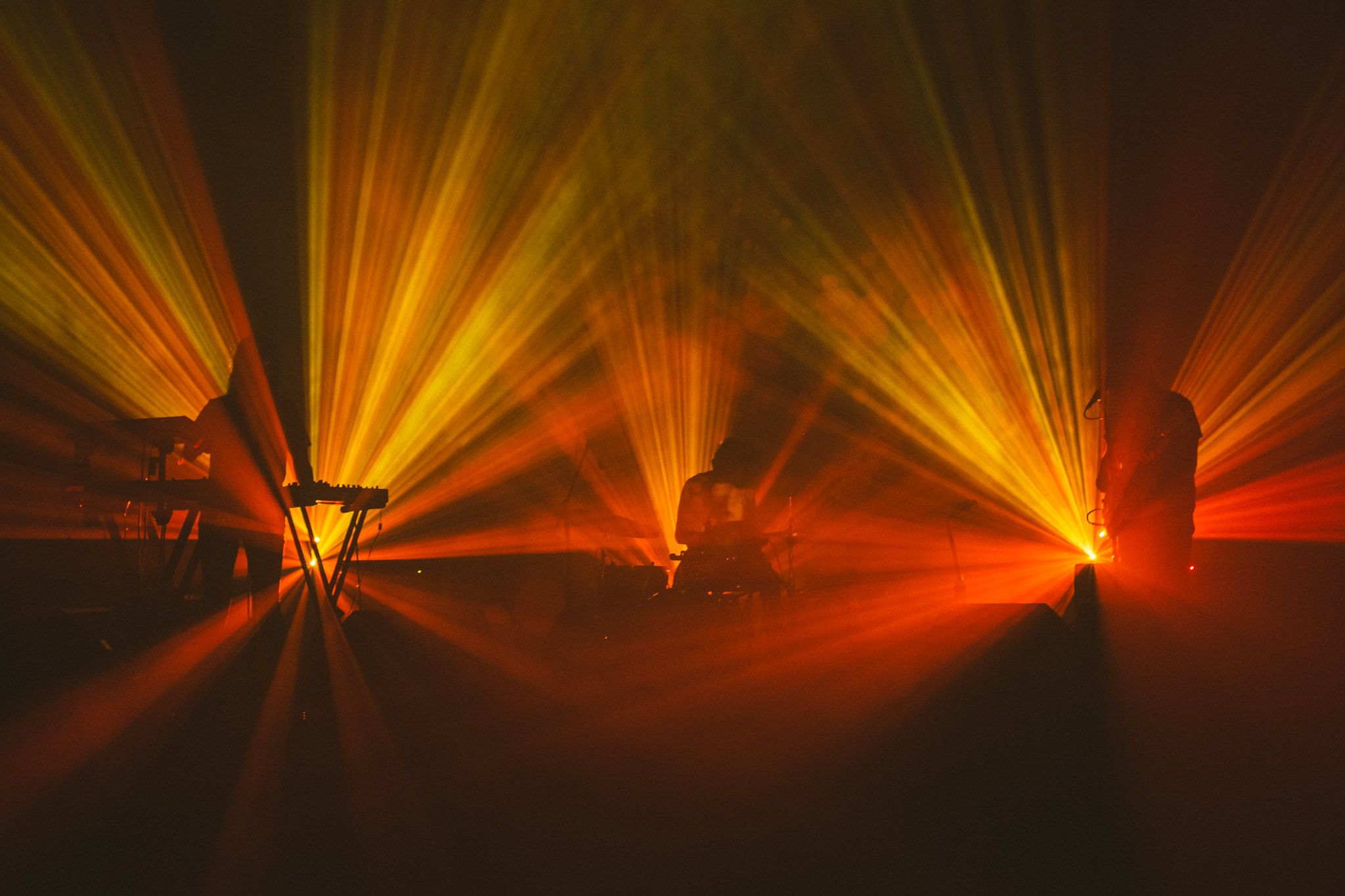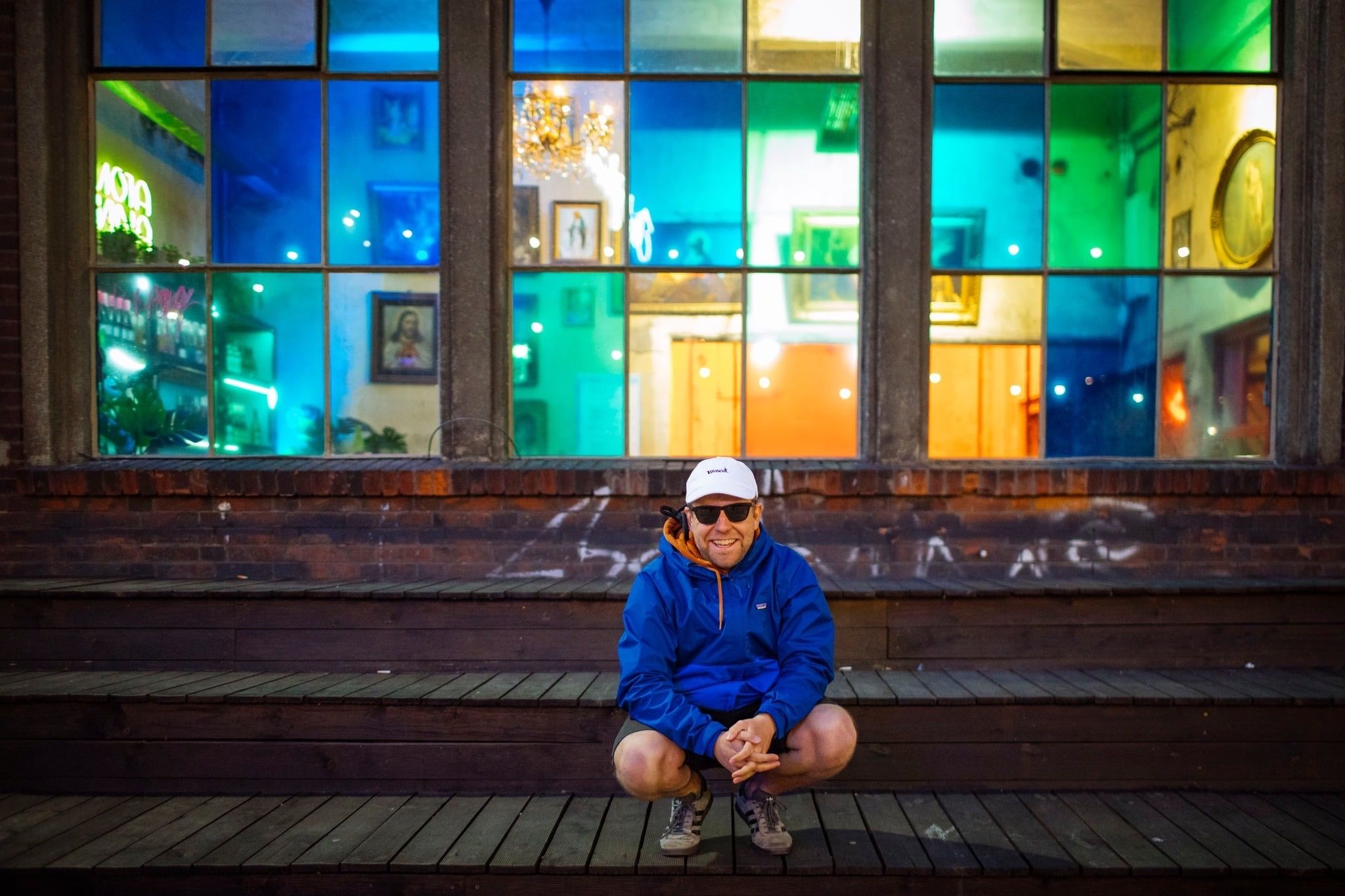How to bring underground music to people’s attention?
Polish music journalist Jakub Knera shares his experience.
Author: Jakub Knera
Photos by: Jakub Knera
We are launching a series of educational events Radio Plato Education, where we will invite various experts and ask them to share their experiences. The first guest is a Polish music journalist Jakub Knera. He is talking on how to transform a festival report or an album review into content that established media will want to publish.
- Jakub Knera is the author of The Quietus’ series of articles Inner Ear about Eastern European music, as well as a contributor to LYL Radio, Polityka Weekly, Radio Folk Culture Center and Dwutygodnik, founder of the site about music Nowe Idzie Od Morza.
– I’ve been writing about culture and music since 2007. For the first five years, I wrote about various culture-related topics for local media in Gdańsk, where I’m based. Then, I spent the following ten years writing for Pop-Up Music, a Polish online magazine. In the meantime, I founded my website Nowe Idzie Od Morza (“news come from the sea” in Polish). The starting point was to cover the local Gdańsk scene.
In 2012, when I started to write for Polityka, the biggest weekly Polish magazine, I needed to choose topics that would be interesting not just for music nerds but for more for a broader audience. So, I will share some insights here with you.
Creative writing techniques
How to make an article more interesting? How can I make a piece more than an album or event review describing the subject by incorporating story-telling? I combine different elements of writing: report, review, and critique.
Festival reports
For the last few years, I’ve been trying to write festival reports narratively. One example is the Tremor Festival on the Portuguese island of Azores in the middle of the Atlantic Ocean, which I attended in 2018 and 2019. The incredible thing about this festival is that the participants include local musicians, and modern bands play alongside traditional collectives.
I decided to write about the shows I had seen and to reach the cultural and geographical context. When I participate in a festival, I find information about where it takes place, its history, and some artistic background. Also, the festival’s program curation gave me many ideas about what and how to write about it, so the context is crucial for me.

Of course, the bands participating in the festival are influential, too, but I’m not trying to write about every performance I see. I usually concentrate on the performances I like the most, which are attractive regarding the event’s program, social context, and geographical context.
I sometimes try to gather quotes from a festival, such as an organizer’s speech or what an artist says during a performance. I believe it adds value to the report and some dramaturgy to the review.
To sum up, I need to turn the report into a story and cover different aspects of the music, not just the music itself.
Album reviews
Album reviews are similar to the festival reports in things I mentioned. When I wrote about Ukrainian violin player Valentina Goncharova two years ago, her music was just a starting point to write about the context of how she made her instruments using DIY methods, her personal story of traveling between Ukraine, Russia, and other countries, and how we can find some traits of the drone ambient genre, comparing her to other artists worldwide. The story’s main topic was that she made music in the 80s. In many aspects, her music was similar to what happened in the West, but it was not widely recognized for many years. Now, 30 years later, you can see that she has achieved aesthetics similar to Western composers but in a different way. She made instruments herself; she only had a little equipment. So, this is the element of what’s new and the artist’s story that is important for such a review.
<iframe style="border: 0; width: wide; height: 500px;" src="https://bandcamp.com/EmbeddedPlayer/album=166928860/size=large/bgcol=333333/linkcol=ffffff/minimal=true/transparent=true/" seamless><a href="https://hidden-harmony.bandcamp.com/album/ocean-symphony-for-electric-violin-and-other-instruments-in-10-parts">Ocean - Symphony for Electric Violin and other instruments in 10+ parts by Valentina Goncharova</a></iframe>This year, I wrote a review of an album by Emahoy Tsegué-Maryam Guèbrou from Ethiopia. There is also an exciting story of her migration from Ethiopia to Italy, to Egypt, then to Israel. The element of how she learned to play the piano and how her music was, on the one hand, similar to Ethiopian music, like Mulatu Astatke, but on the other hand, much closer to Western European piano composers like Claude Debussy, Eric Satie, etc. is fascinating. It is worth showcasing an artist from a part of the world without good music distribution networks. And now, decades later, their album has been reissued, and listeners worldwide can hear it. These are not just old recordings put out today, but there are also often fascinating stories behind them.
Cultural analysis
Cultural analytics involves different elements and requires a more artistic and political context. Initially, I need to ask myself why this subject is fascinating. It could not necessarily be attractive to a larger audience. If I write a pitch for a media outlet, I answer the following questions: why is it exciting and vital? Sometimes, the topic could be interesting, but you must consider whether it’s essential for anyone else.
The involvement of key figures in what is happening makes the piece much more enjoyable. It is good to have some speakers who can add value to the piece, show the other perspective, and speak about the subject from personal experience. I write about what’s happening and show real people with their stories and lives, making the piece much more emotional.

Thanks to this big investigative topic, you can see what is happening worldwide. Sometimes, only people from the same part of the world know about those phenomena—presenting them. You can bring value by broadcasting those stories to a global audience.
Inner Ear for The Quietus
The first example is my column, Inner Ear, for The Quietus. Every 3 to 4 months, I cover a music scene of one country. Each episode is more challenging because there are scenes that I know a lot about and others just a bit. I’m trying to find ways of discovering releases and record labels. I’m trying to find critical people like producers, artists, journalists, and organizers who can speak about the music. It is good to show some essential events of that specific country because they also show the context of how that music scene is evolving.
The geographical context was crucial when writing about the Slovenian music scene because of the country’s location at the crossroads of paths between different countries. The band Širom, which I covered, said that they are playing “imaginary folk”, which is their way of describing their music genre, but it also uncovers another aspect of the whole music scene.
<iframe style="border: 0; width: wide; height: 500px;" src="https://bandcamp.com/EmbeddedPlayer/album=798380862/size=large/bgcol=333333/linkcol=ffffff/tracklist=false/transparent=true/" seamless><a href="https://sirom.bandcamp.com/album/the-liquified-throne-of-simplicity">The Liquified Throne of Simplicity by Širom</a></iframe>Polish jazz for Bandcamp Daily
“Polish Jazz” is a well-known series of vinyl releases published in Poland since the 50s. Usually, when you think of Polish jazz, you think about big names like Krzysztof Komeda, Jan Ptaszyn Wróblewski, and Tomasz Stańko.
But during the last ten years, there has been a new wave of young musicians born in the ’90s or the ’00s, playing jazz in new, exciting ways, participating in various projects, and showing a different modern approach to making music. Musicians of the 50s, 60s, and 70s mostly lived in Poland and made music here; nowadays, many young jazz musicians study abroad, and many are at Copenhagen Music Conservatory. The differences in the music education system are evident. You can hear it in their music when they combine different genres - that shows how different it is from what was happening 50 years ago but also how it influences their way of thinking.
Also, the details of each musician are important: what do musicians have in common, do they share similar ideas and experiences, what kind of individuals they are, their history of playing music, and their education. Interviews provide a personal perspective that makes a piece that much more enjoyable. It lets you see the people involved in the subject, their feelings, and experiences.
<iframe style="border: 0; width: wide; height: 470px;" src="https://bandcamp.com/EmbeddedPlayer/album=2021688386/size=large/bgcol=333333/linkcol=ffffff/tracklist=false/transparent=true/" seamless><a href="https://joannaduda.bandcamp.com/album/joanna-duda-trio-fumitsuke">JOANNA DUDA TRIO - FUMITSUKE by Joanna Duda</a></iframe>The outlines label for Resident Advisor
When I wrote an extensive investigative article about the Polish footwork music label Outlines for Resident Advisor, the first thing that was the most interesting was that we have this kind of niche of electronic music from the perspective of Poland, from Wrocław.
Outlines follow different artists, contact them, and commission albums. The founder, Paweł “Paide” Dunajko, gets an idea of sound he would like to find or achieve and then commissions a piece from musicians he admires or sees in this context. From the perspective of the music scene, that’s an exciting approach.
There is also an essential aspect to put Wrocław in the context of other, bigger cities like Chicago or Paris.
<iframe style="border: 0; width: wide; height: 500px;" src="https://bandcamp.com/EmbeddedPlayer/album=3723326285/size=large/bgcol=333333/linkcol=ffffff/minimal=true/transparent=true/" seamless><a href="https://outlineslabel.bandcamp.com/album/beyond">Beyond by DJ Strawberry</a></iframe><h2>Reaching established media outlets</h2>Reaching an international media outlet is not as difficult as many would say. All that is needed is good research and following the rule of trying and, once again, trying. It is generally an excellent way to work and do things.
It’s crucial to tell a story. If there is an exciting musician, if something is happening somewhere, it’s not enough to describe just what is happening. It would help if I put in some story to make it attractive for people who don’t know or care about it. I can make them care about it, and it’s the story that allows me to make the subject compelling for an audience. It is essential to answer the question: “What makes this artist or this topic so special?” Answering this question makes sending a pitch to different media much more accessible.
What I’m most often doing is some scene report highlighting some shared mission, some social impulse, and some context that makes it interesting. For example, my first step is saying there’s an exciting music scene in Gdańsk. The second one needs to be done too: to find something that brings all these musical elements to life and what makes them attractive.

When I wrote about the collaboration of an Ethiopian jazz musician Mulatu Astatke with Polish jazz musicians in the 70s for Polityka Weekly, in the beginning, I only knew about the very fact that such collaboration took place. But when I started to dig deeper into this, I checked materials from old jazz magazines; I discovered what the Ethiopian music scene looked like in the 70s or 80s; I found reports of Astatke coming to Poland and Polish jazz musicians visiting Addis Ababa. It grew up in the colorful story of nightlife in Ethiopia and the jazz scene in Poland. I also spoke with Polish jazz musicians who participated in these events, which gave me different perspectives. Again, not just music was important.
Writing just about music belongs mostly to strictly music magazines. But even there, when many pitches are coming in, it’s crucial to have additional value and content, which is intriguing behind this music.
(Music) media are open to new pitches: scene reports, artist profiles, and album reviews. There’s just one thing that needs to be done: reach them with ideas. Very often, only journalists from different parts of the world can write about it, except journalists from different parts of the world who are experts in local scenes. It’s always an advantage to expand the Western point of view.
Useful materials:
